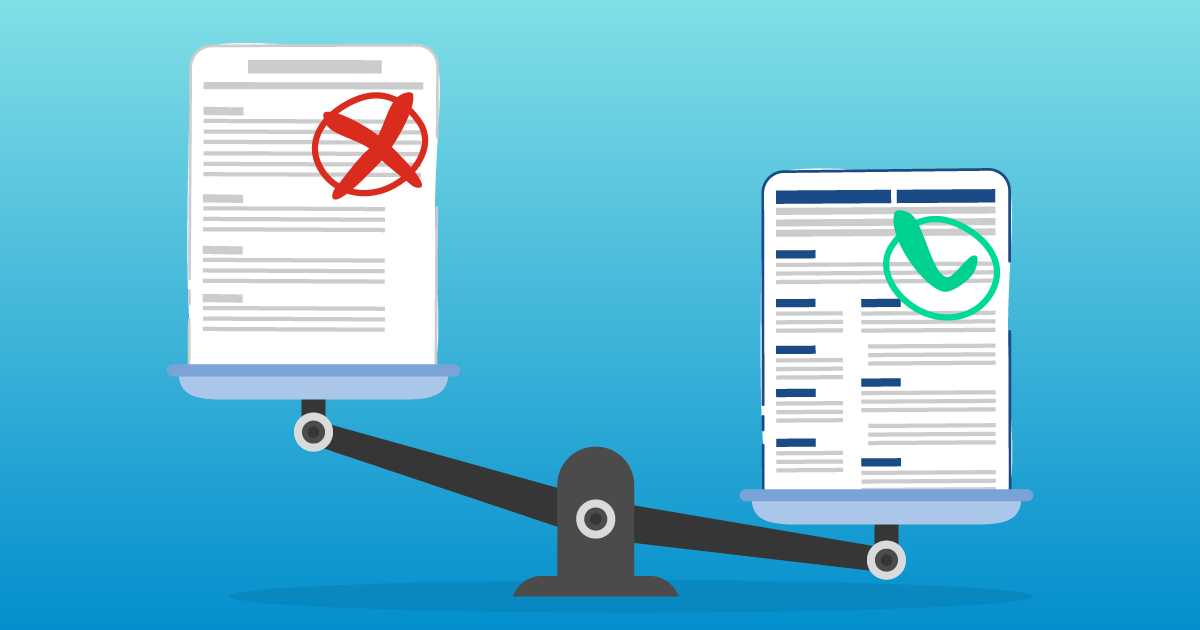There it is… your dream job.The job description sounds perfect—exactly what you’ve been looking for. The benefits are great, and the company seems like an amazing place to work. But there’s one problem: the application deadline is coming up fast, and you still need to send in your CV.
So, how do you write a good CV? I know what you’re thinking…
20254was called ‘The Great Resignation’ because so many people quit their jobs to find better opportunities. And this trend isn’t stopping—as we move into 2025 and beyond, more and more workers are rethinking their careers in today’s changing job market.

If you want to land your dream role, follow these eight simple steps to create a CV that stands out. Or, if you’re in a hurry, you can jump straight into our course on how to write a brilliant CV.
1. Start by giving your CV (and its file name) a title
Just like any important document, your CV needs a clear title at the very top. This should be your full name—first and last. There’s no need to write ‘Curriculum Vitae’ because the hiring manager will already know it’s a CV from the way it’s structured.
Don’t forget the file name!
When you save your CV, name it something like:
- John_Smith_CV.pdf
- Sarah_Jones_CV.docx
This makes it easy for employers to find and remember your application.
2. Add your personal contact details
Since your name is already at the top, this section is all about making sure employers can reach you easily. Here’s what to include:
✔ Your current location (so they know if you’re nearby).
✔ A phone number (use one you answer regularly).
✔ A professional email (something simple like firstname.lastname@email.com).
What NOT to include:
✖ Your date of birth or age (employers don’t need this, and age discrimination is illegal).
✖ Your nationality (the Equality Act 2010 protects against discrimination based on race or nationality).
Bonus tip: If the job requires driving, mention that you have a valid driver’s license—it’s a quick way to show you’re a good fit.
3. Tailor your personal statement
This is a short paragraph (around 50–200 words) that sums up:
- Who you are (your current job title).
- What you can offer (your key skills and biggest achievements).
- Your career goals (and how this job fits into them).
Make it relevant! Read the job description carefully and match your statement to what the company is looking for.

4. Map out your relevant work experience
You don’t need to list every single job you’ve ever had—just the ones that matter most for this role.
✔ If you have years of experience, focus on jobs that relate closely to the position.
✔ If you’re just starting out, include part-time jobs, internships, or volunteer work to show your work ethic.
For each job, list 2–3 key responsibilities and achievements, especially ones that match the new role.
5. Showcase your skills
This is where you prove you’ve got what the employer wants.
✔ Hard skills (job-specific abilities like Excel, coding, or foreign languages).
✔ Soft skills (people skills like teamwork, leadership, or problem-solving).
No experience? No problem! Online courses (like ours) can help you build and highlight these skills.
6. List your education and qualifications
- School/college: If you have GCSEs or A-Levels, just summarize how many you have and your grades (include Maths & English).
- University: List your degree subject and grade (e.g., Business Management, 2:1).
- Professional qualifications: Include any certificates needed for the job (e.g., Legal Practice Course for lawyers).
Want to stand out? Add a course from our selection to boost your qualifications.

7. (Briefly) include hobbies and interests
A couple of personal touches can make you more memorable—just keep it short.
✔ Better yet, link them to the job (e.g., playing football for a sports-related role).
✔ Even better, turn them into achievements (e.g., “Ran a marathon in 2025”).
8. Mention your references
You don’t need to list names and contact details—just write:
“References available upon request.”
If you’re asked later, you can provide them.
Extra Quick Tips:
What colour should my CV be?
Stick to black and white for a clean look. If you want colour, use something professional like navy blue. Avoid bright colours (pink, yellow)—they’re distracting.
How long should my CV be?
Aim for 2–3 pages, but one page is fine if it’s strong. More than four? Cut it down.
Which program should I use?
- Most jobs: Microsoft Word, Apple Pages, or Adobe (save as PDF to avoid formatting issues).
- Creative roles (e.g., design): Use Adobe Portfolio or Behance to showcase your work.
One final check before sending!
Before you submit your CV:
✔ Proofread it (check for spelling/grammar mistakes).
✔ Use Word’s ‘Read Aloud’ feature to hear how it sounds.
✔ Ask a friend or family member to review it.
Need more help?
- Take an executive-level course to boost your CV.
- Explore Pearson Professional Programmes for qualifications employers value.
